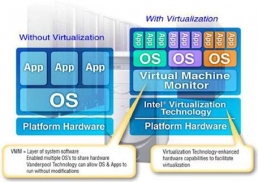 Nowadays thousands of organizations not only generate more data but also accumulate existing information and use more applications in their work. The increase of amount of data requires a larger number of resources for storage, processing and displaying of information. A company has a choice to leave it as it is or purchase and increase the number of physical servers. As a result, the organization is gradually becoming a datacenter. And this is not the core activity but only a complimentary one. Finally, the question arises: how to solve this problem. At the moment, the most effective solution is virtualization, which allows the organization to use resources of the physical servers in the most effective way.
Nowadays thousands of organizations not only generate more data but also accumulate existing information and use more applications in their work. The increase of amount of data requires a larger number of resources for storage, processing and displaying of information. A company has a choice to leave it as it is or purchase and increase the number of physical servers. As a result, the organization is gradually becoming a datacenter. And this is not the core activity but only a complimentary one. Finally, the question arises: how to solve this problem. At the moment, the most effective solution is virtualization, which allows the organization to use resources of the physical servers in the most effective way.
What Is Server Virtualization?
Server Virtualization lets you combine functionally independent servers running on different operating systems on one physical server. We install many independent operating systems on a single physical server. Each OS has its own dedicated resources. As a result, we can easily configure an entire office data infrastructure (the domain controller, a mail server, file server, database server, an application server, etc.) with only one or two physical servers.
Benefits of Server Virtualization
- lets you launch new business projects in less time, without having to buy new equipment;
- energy saving – reducing the cost of power, cooling and UPS;
- downtime reduction, minimizing the recovery time after a system crash;
- new equipment cost reduction;
- reducing the cost of maintenance and service personnel;
- increase in fail-resistance;
- increase in IT infrastructure flexibility;
- remote administration;
- software unification;
- security raise.
Our employees have considerable experience in implementing and supporting virtualization technologies: Microsoft Hyper-V, VmWare, Citrix, OpenVZ, Proxmox and others.

Stages of Implementation of Virtualization Infrastructure:
- Current infrastructure analysis.
- Working out a plan based on the studied processes.
- Choosing the most suitable product.
- Calculation of costs.
- Implementation and support of virtual infrastructure.